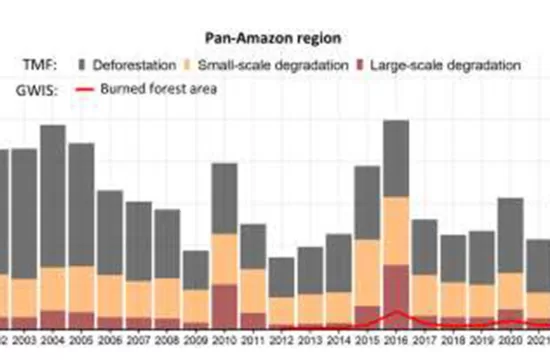By Dr. Kanta Poudyal, Associate Professor, Amrit Campus, TU
Introduction
Food crisis is an inexorable threat to the civilized world. According to the 2013 Global Hunger Index (GHI), released for the eighth year by the International Food Policy Research Institute (IFPRI), Welthungerhilfe, and Concern Worldwide, world hunger remains “serious,” and 19 countries suffer from levels of hunger that are either “alarming” or “extremely alarming”. They have reported Nepal in the 49th position in 2013 with a score of 17.31. Furthermore, the world population has reached 6 billion and is predicted to double in the next 50 years, and the Food and Agriculture Organization of the UN estimates that we need to grow 70 percent more food by 20502. In this milieu, an adequate supply of food for this growing population is going to be a major challenge in the years to come. To wrestle this situation, genetically modified foods (GM foods or GMO), have come as an answer back and promise to meet this need in a number of ways. Earlier plants were modified for the desired traits through selective and mutation breeding but these conventional plant breeding methods are time consuming and are often not very accurate. GM foods are foods produced from organisms with desired traits through genetic engineering with specific changes introduced into their DNA. For example, plant geneticists can isolate a gene responsible for large sized fruit and insert that gene into a different plant. The new genetically-modified plant will gain that trait as well. Such plants are created with the exact desired trait very rapidly and with great accuracy. The term GMO in the technical legal term, is defined as “any living organism that possesses a novel combination of genetic material obtained through the use of modern biotechnology” by the Cartagena Protocol on Biosafety, which regulates international trade in living GMOs3.
Commercial sale of genetically modified foods began in 1994, when Calgene first marketed its Flavr Savr (“flavor saver”, also known as CGN-89564-2), a delayed ripening tomato4. To date most genetic modification of foods have primarily focused on cash crops such as soybean, corn, canola, and cotton seed oil. These have been engineered for resistance to pathogens and herbicides and better nutrient profiles.
Controversies
Since the time of production, GM foods have been a subject of many controversies and there is a great perplexity regarding their commercial productions. The dispute involves consumers, environmental activists, scientists, public interest groups, professional associations, biotechnology companies, governmental regulators, non-governmental organizations and religious organizations. Even the Prince of Wales has expressed his opinion in this issue5. In fact both developed and developing countries have a strong opinion about GM foods and have been criticizing agribusiness for pursuing profit without concern for potential hazards, and the respective government for failing to exercise adequate regulatory oversight. The key areas of concern related to GMO foods are: environmental hazards, human health risks, adverse effects on biodiversity, impact of GM crops for farmers and the role of governments.
The advocates of GM foods have put forward many enthralling qualities of GM foods which can be explained as such:
1. Pest resistance- Crop losses from insect pests has been a great financial loss for farmers and they have been using thousand of tons of chemical pesticides annually. Such a huge amount of use of pesticides on the one hand increases overall cost of the products while on the other hand such foods have many potential health and environmental hazards. Growing GM foods such as Bacillusthuringiensis (Bt) corn/maize (Ciba-Geigy), a pest resistant crop can help to put an end to the application of chemical pesticides and reduce the negative effect.
2. Herbicide tolerance- Crop plants genetically-engineered to be resistant to herbicide could reduce the amount of herbicides use.
3. Disease resistance- There are many viruses, fungi and bacteria that cause plant diseases. Plant biologists are working to create plants with genetically-engineered resistance to these diseases.
4. Drought tolerance/Cold tolerance- In the pretext of global warming and unprecedented climatic changes, drought and frost are more likely to be recurrent with an adversary effect on crops. Creating plants that can tolerate long periods of drought and frost will be an advantage to farmers.
5. Nutrition value- Malnutrition is common in many third world countries including Nepal, where peoples rely on a single crop mainly rice as the main staple diet. However, rice does not contain adequate amounts of all necessary nutrients. If rice could be genetically engineered to contain additional vitamins and minerals, nutrient deficiencies could be alleviated.
6. Pharmaceuticals- Medicines and vaccines often are costly to produce and sometimes require special storage conditions not readily available in third world countries. Researchers are working to develop edible vaccines in tomatoes and potatoes6 instead of traditional injectable vaccines.
7. Phytoremedy– Not all GM plants are grown as crops. Soil and groundwater pollution continues to be a problem in all parts of the world. Plants such as poplar trees have been genetically engineered to clean up heavy metal pollution from contaminated soil 7.
Whatever arguments are put through by the advocates of GM foods, the opponents also have put forward a very strong view regarding the issue and many organizations such as Organic Consumers Association, Greenpeace (especially with regard to Golden rice) and Union of Concerned Scientists have been continuously putting forth their views through media, seminars and demonstrations. The major disquiets shown by them are environmental hazards, human health risks, and economic concerns. Environmentalists’ concern for genetically modified crops are that they are planted in fields much like regular crops where they interact directly with organisms that feed on the crops, and indirectly with other organisms in the wider food chain and might have various effects. Similarly other potential risks of GMOs are-
1. Reduced effectiveness of pesticides.
2. Gene transfer to non-target species such as GM crops with Vip (vegetative insecticidal proteins) genes from Bacillus thuringiensis(Bt) can affect non target organisms, usually the organisms closely related to the intended targets 8.
3. ransfer of disease resistant, insect and pest resistant, herbicide resistant genes in nature through natural cross breeding.
4. Effects on biodiversity- the widespread use of GM crops designed to resist agrochemicals will cause damage to the environment and biodiversity.
5. Transfer of genetic material i.e. gene flow from genetically engineered plant to cultivated or wild via pollination which might lead to unintended genetic modifications of adverse effects.
6.Emergence of secondary pests – A 2009 study in China found that more pesticide sprayings in Bt cotton cultivars was needed over time to control emerging secondary pests, such as aphids, spider mites, and lygus bugs9. Similar problems have been reported in India, with mealy bugs10.
7.Allergenicity- One of the well-known risks of GM food, is the possibility that introducing a gene into a plant may create a new allergen or cause an allergic reaction in susceptible individuals.
8. Unknown effects on human health- There is a growing concern that introducing foreign genes into food plants may have an unexpected and negative impact on human health.
Status Of GM foods and Role of Government at international and national level
Due to the worldwide ongoing debate on the adversities of GM foods, many countries have shown their diffidence and are agnostic about the adverse effects. According to the International Service for the Acquisition of Agri-biotech Applications (ISAAA) and the Biotechnology Industry Organization, 13 countries started growing genetically-engineered crops commercially in 2000 and of these, U.S. produced 68% of all. In comparison, Argentina, Canada and China produced only 23%, 7% and 1%, respectively. Other countries that grew commercial GM crops are Australia, Bulgaria, France, Germany, Mexico, Romania, South Africa, Spain, and Uruguay. It has been almost 14 years since the first GM crop was introduced for commercial cultivation and today 75% of GM crops are cultivated in just 3 countries; USA, Brazil and Argentina11.
The regulatory process of GMOs is incongruent in different countries and many are yet to establish a defined process to monitor the effects of different varieties of GM plants and on the basis of political, social and public opinion. Governments in different countries are responding in different ways. Some countries have completely banned GMOs; others convene for mandatory labeling of genetically modified food or other products, while some have opted for no labeling of GM foods. In India, the Supreme Court-appointed Technical Expert Committee (TEC) on field trials of genetically modified crops in July 2013, recommended that there should be an indefinite stoppage of all open field trials of GM crops and a ban on the environmental release of any GMO where India is the centre of origin or diversity12. Till date India has produced Bt cotton only in commercial scale and Indian regulators had cleared the Bt brinjal, a genetically modified eggplant, for commercialization in October 2009, but following the opposition from some scientists, farmers and environmental groups, a moratorium was imposed on its release in February 201013.
In Japan, the Ministry of Health and Welfare has made the health testing of GM foods mandatory from April 200114. Japanese supermarkets are offering both GM foods and unmodified foods, and customers are beginning to show a strong preference for unmodified fruits and vegetables. Some states in Brazil have banned GM crops entirely, and the Brazilian Institute for the Defense of Consumers, in collaboration with Greenpeace, has filed suit to prevent the importation of GM crops. In response to the public gripe, Europe now requires mandatory food labeling of GM foods in stores. In the United States, the regulatory process is baffled because there are three different government agencies (EPA, Environment Protection Agency, USDA, US Department of Agriculture and FDA, US Food and Drug Administration) which have the jurisdiction over GM foods. Biotechnology labeling is not required in the United States, although there have been numerous efforts to pass labeling laws15. Eighteen state legislatures that debated GM labeling legislation in early 2012 and different states have different regulations16.
However, in Nepal, formally, no GM crops/seeds are registered, introduced and grown so far. Recently issue has been raised by civil society, media and farmers’ right based organizations regarding GMOs and terminator seeds. Nepal is in very infant stage regarding GM crop testing, quality control and development of legislation. In Nepal, there are two regulatory policies namely; National Agro Biodiversity Policy (2063) and National Biosafety Framework (2063). They provide overall policy framework for agricultural biodiversity conservation in Nepal and authorize the concerned agencies through regulatory measures and guidelines to avoid or minimize potential risks of GMO plant & their products. In addition, the government has also formed National Biodiversity Coordination Committee, National Biosafety Committee/ National Competent Authority and SCA (Six Sectoral Competent Authorities) for effective monitoring and regulation of GM products17. Because the existing seed policy, the National Seed Vision (2013-2025) issued by the ministry of Agriculture, does not adequately address issues on modern plant breeding techniques, including biotechnology and GMO, there is an urgent need to formulate clear-cut guidelines on GMO and GMO seeds with risk identification and permitting release of GMO. The GMOs in question should be subjected to an adequate period of observation, at least to its life cycle or one generation time. Prior to it, GMOs packages & products need to have labeling with general information on GMOs, potential risks level and application of emergency measures while certain products ( marked with antibiotic resistance) should be banned completely.
Conclusion
In Nepal, due to the political instability and a long term insurgency, the existing laws and rules with regards to the issues of the modern science such as genetic engineering, biotechnology and GMOs lack the precise provisions and regulatory Acts, which need to be addressed as early as possible. Recently we had an instance of a judiciary verdict from the Supreme Court, Nepal, which issued an interim order to prohibit the import of Genetically Modified (GMO) seeds, including those supplied by Monsanto; a US based controversial agricultural biotechnology company. This has abated the issue for some time but it is also a fact that judiciary people might not always be well acquainted with the appalling effects of such products. Hence the role of National legislatives, bureaucrats, environmental activists, media and scientific research personnel has become very crucial in this issue. Some people might have a premeditated interest and campaign by special interests of some, but we cannot forego the fact that if we don’t act now, things might get out of hand, which will ultimately determine the future of generations to come. Thus it is particularly important that science professionals play a substantial role as awareness campaigners and promulgate the facts of this crucial issue and related information about production, import, handling and use of GMOs and related products and involving the general public in greater conversations. Genetically-modified foods have the potential to solve many of the world’s hunger and malnutrition problems, and help to protect and preserve the environment by increasing yield and reducing reliance upon chemical pesticides and herbicides. Yet there are many challenges and perplexities ahead especially in the areas of safety testing, regulation, international policy and food labeling.







